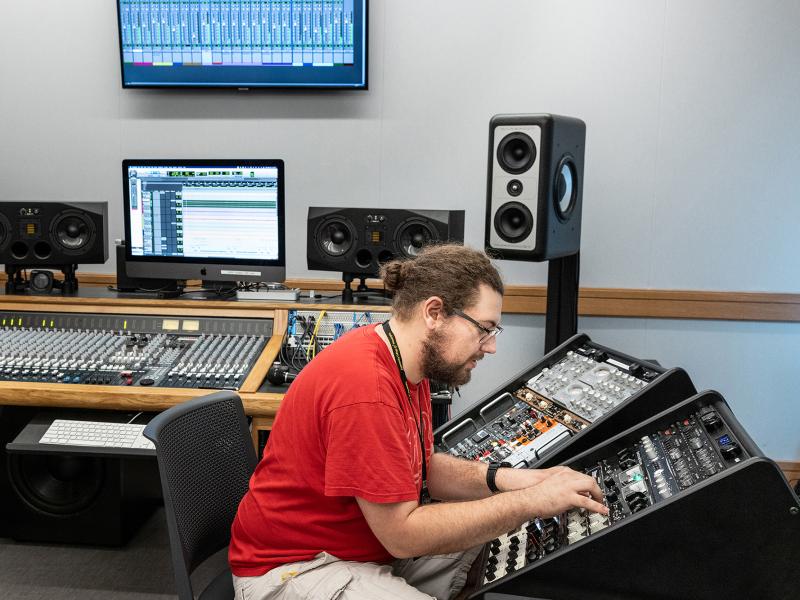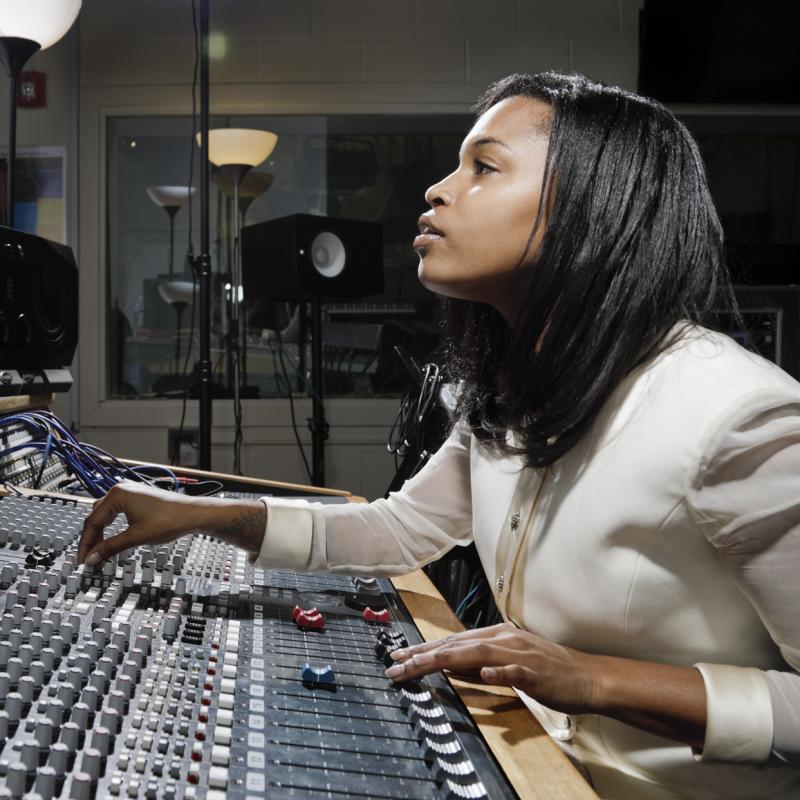-
Program Duration: Short Term Program
-
Degree Type: Proficiency Certificate
-
Total Credit Hours: 17

About This Certificate
Calling all creatives! Do you have an ear for music production or songwriting? Put your talents to use and stretch your creative muscles with our Music Production Proficiency Certificate. Throughout this program, you will learn skills in music production, sound design, piano literacy and music theory that will prepare you to work as a producer, recording engineer, sound designer and/or songwriter. If you want to continue your education, this certificate will allow you to move seamlessly into the Associate in Applied Science degree program in Sound Recording and Music Technology (SRMT).
Course Sequence:

Launch Your Career in Music Production
- Music directors and Composers – est. salary $68,596
- Musicians and Singers – est. salary $78,099
- Audio and Video Technicians – est. salary $69,646
Career Outlook
Median Salary of a Sound Engineering Technician
Number of Jobs in the Region
10-year Job Outlook in the Region for Sound Engineering Technician
Sound Engineering Technician
Operate machines and equipment to record, synchronize, mix, or reproduce music, voices, or sound effects in sporting arenas, theater productions, recording studios, or movie and video productions.
Starting Pay: $35,919

Typical Tasks
- Confer with producers, performers, and others to determine and achieve the desired sound for a production, such as a musical recording or a film.
- Prepare for recording sessions by performing activities such as selecting and setting up microphones.
- Regulate volume level and sound quality during recording sessions, using control consoles.
- Record speech, music, and other sounds on recording media, using recording equipment.
- Separate instruments, vocals, and other sounds, and combine sounds later during the mixing or postproduction stage.
Related Programs
Let's Get Started
